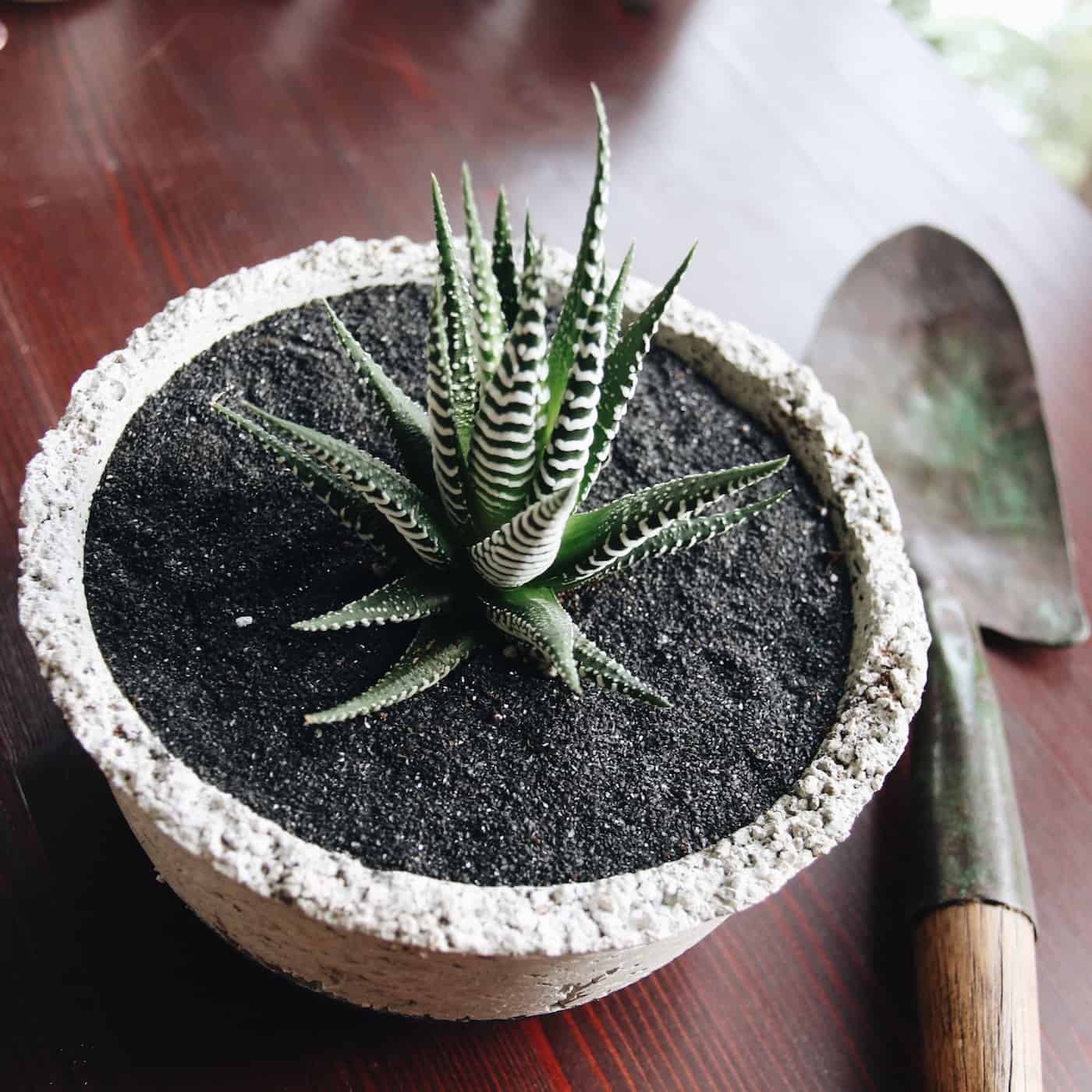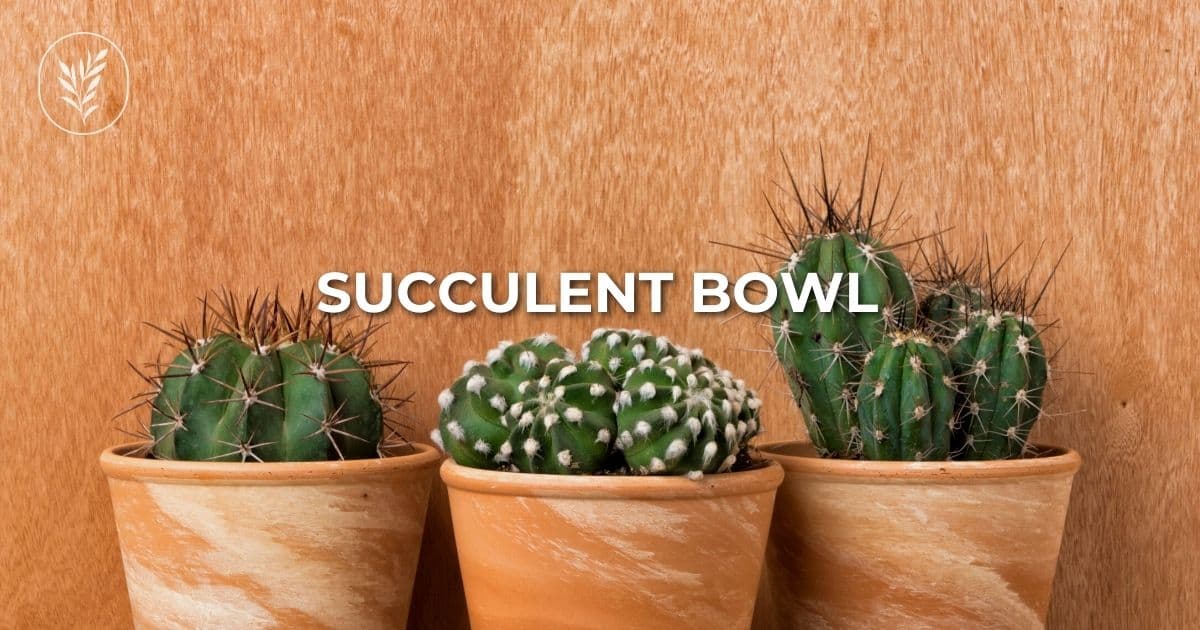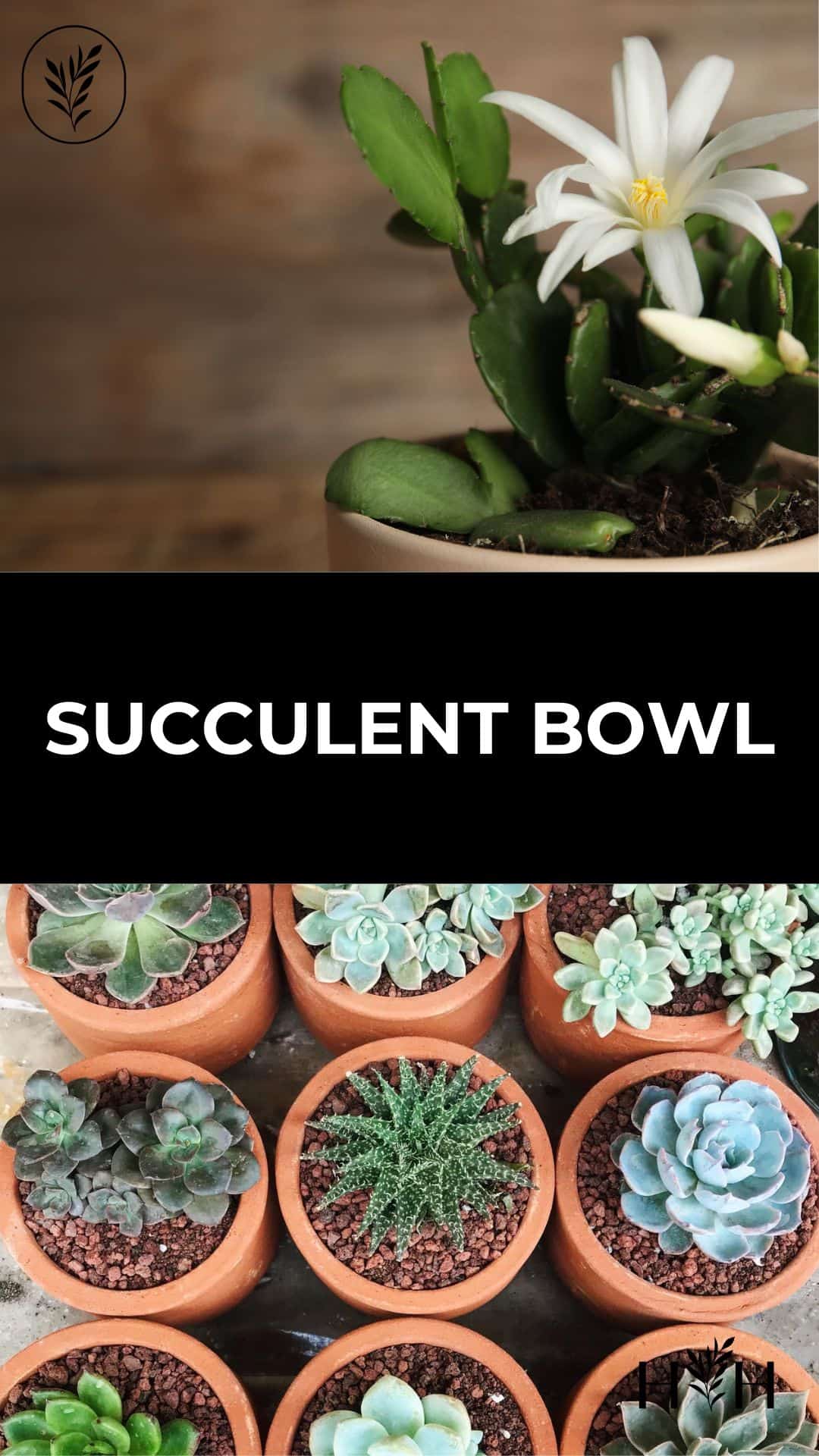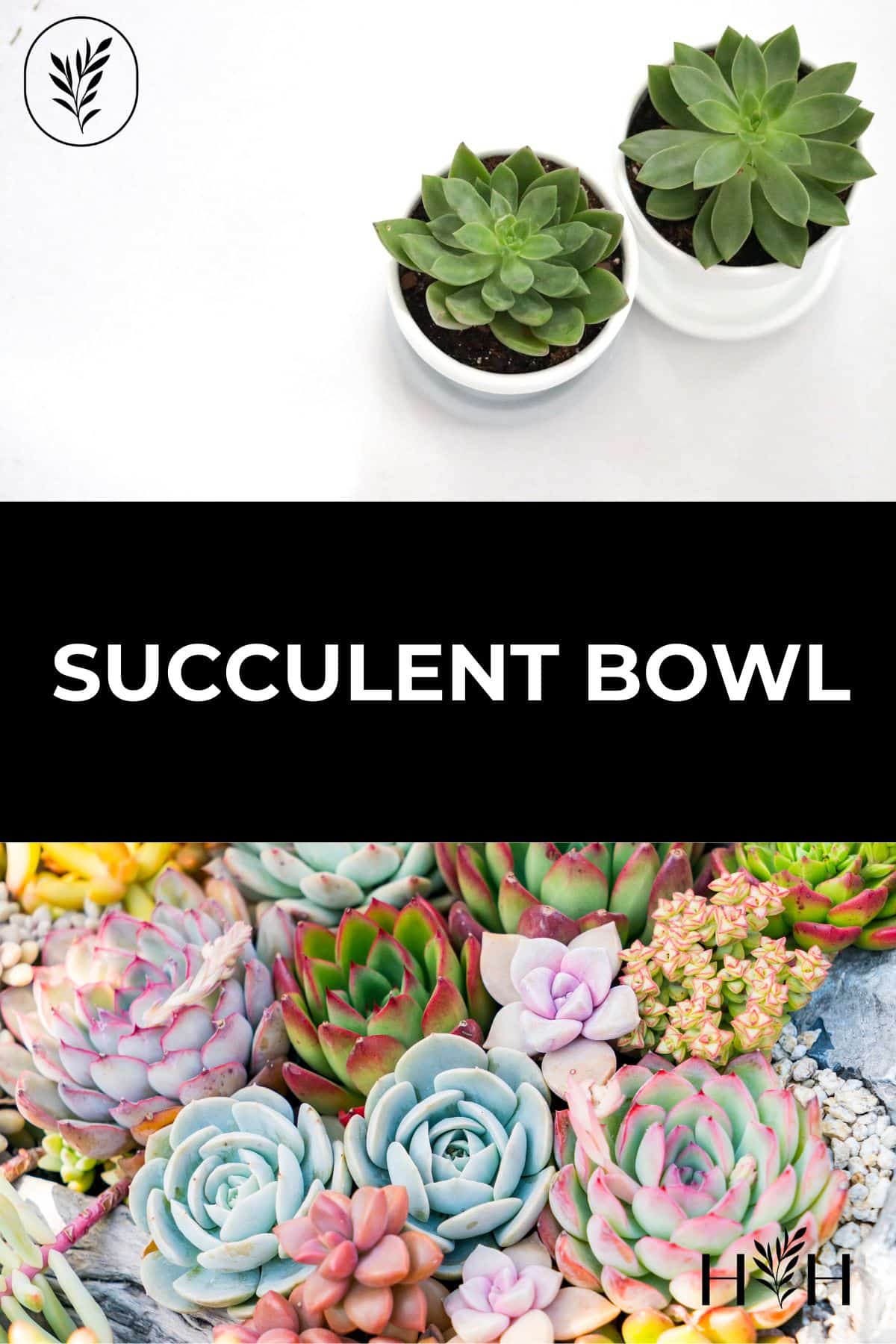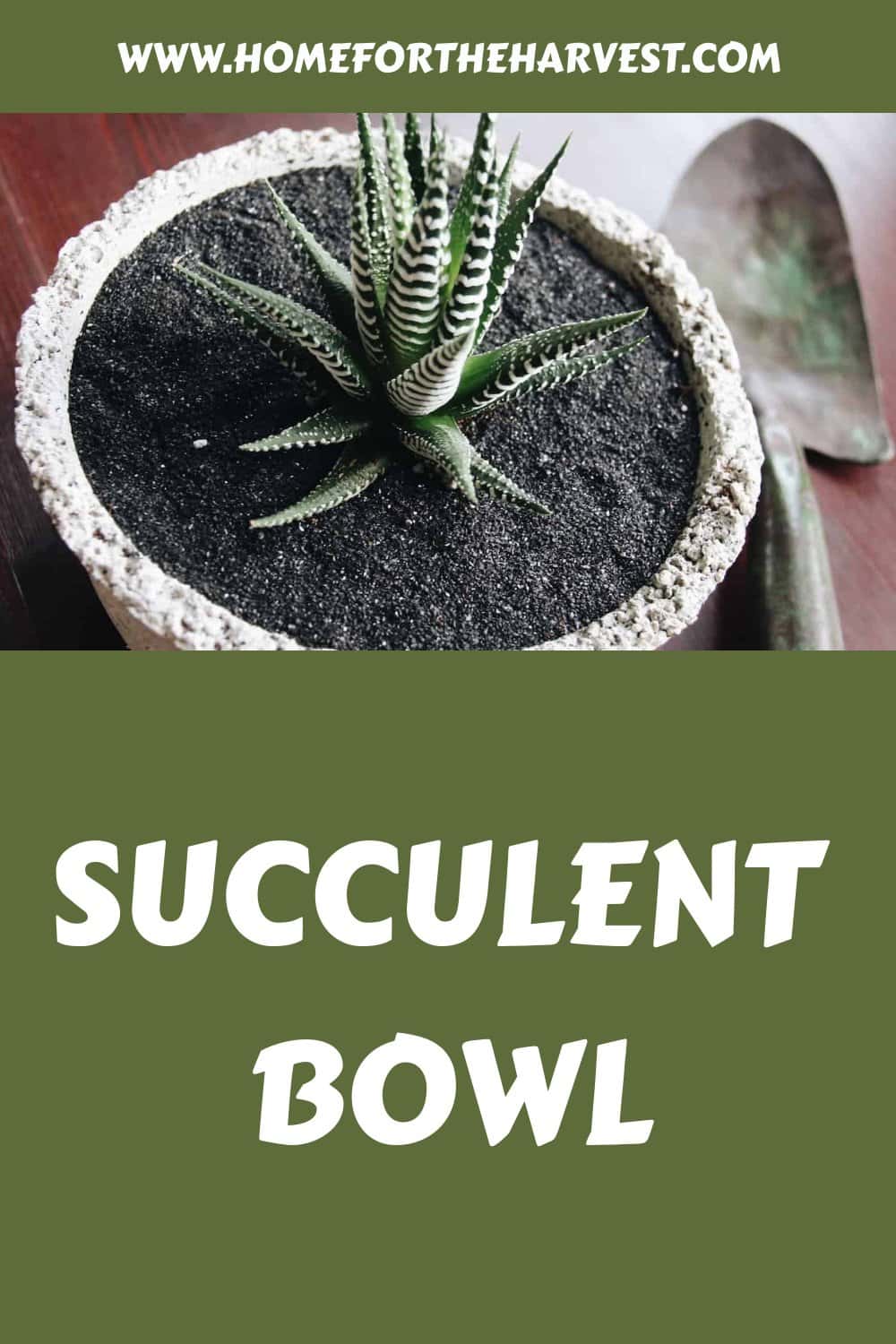Succulents are beautiful, low-maintenance, and fun to grow. By learning how to grow a succulent bowl, you can bring a bit of nature indoors for the cooler months with a minimal amount of effort. These succulent bowl gardens can be made in glass bowls, pottery bowls, and even concrete bowl containers…and will thrive indoors!
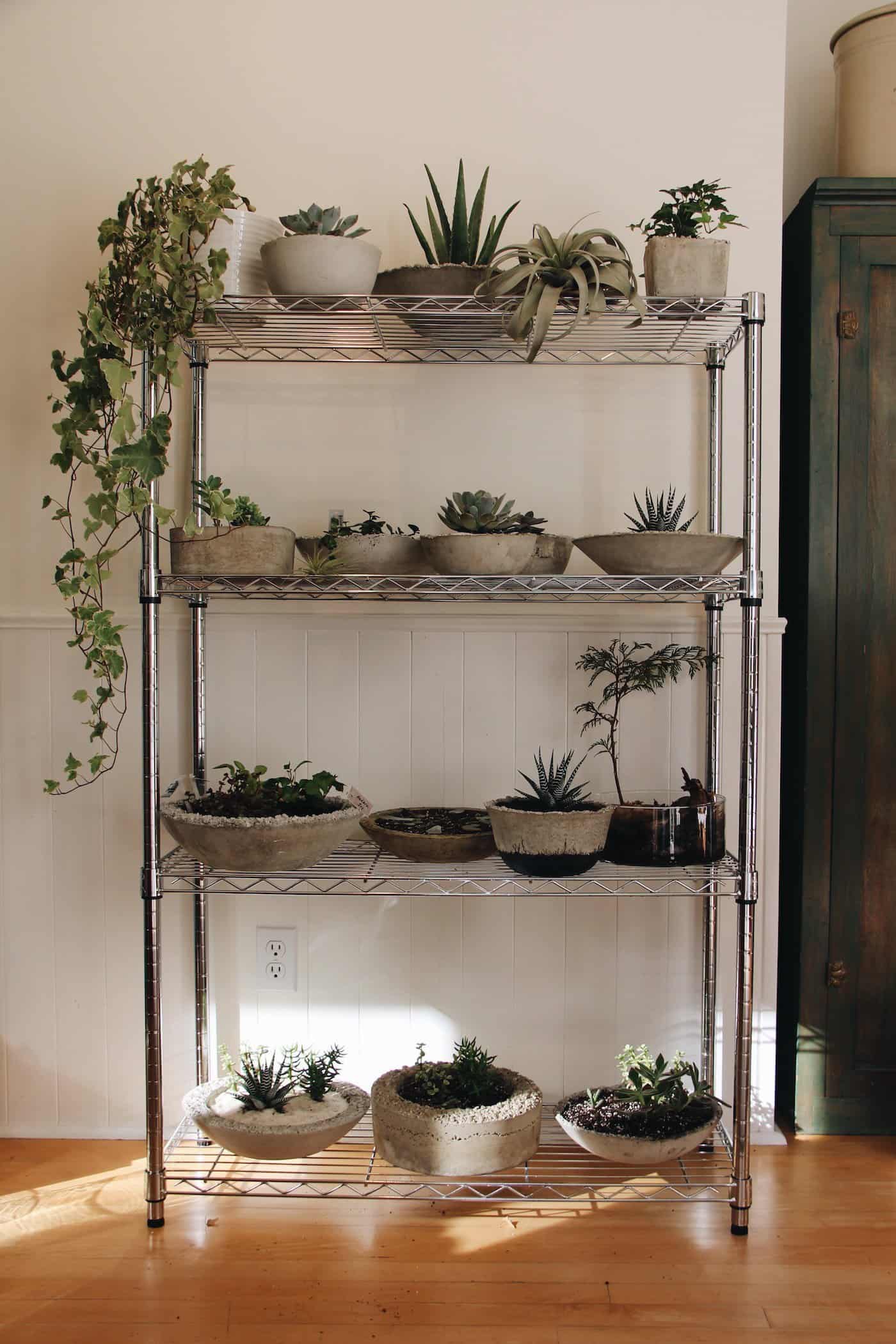
Succulent bowl gardens
Succulent bowls have become more common in recent years. They’re an easy way to welcome some natural life indoors or onto the patio. They make lovely centerpieces, or if you’re like me, lovely collections!
Succulents are very low-maintenance. They truly do thrive on neglect. If you go away for the holidays, these plants will survive without water for weeks. In fact, the only succulents I’ve killed died because I over-watered them (I was just trying to love them!….).
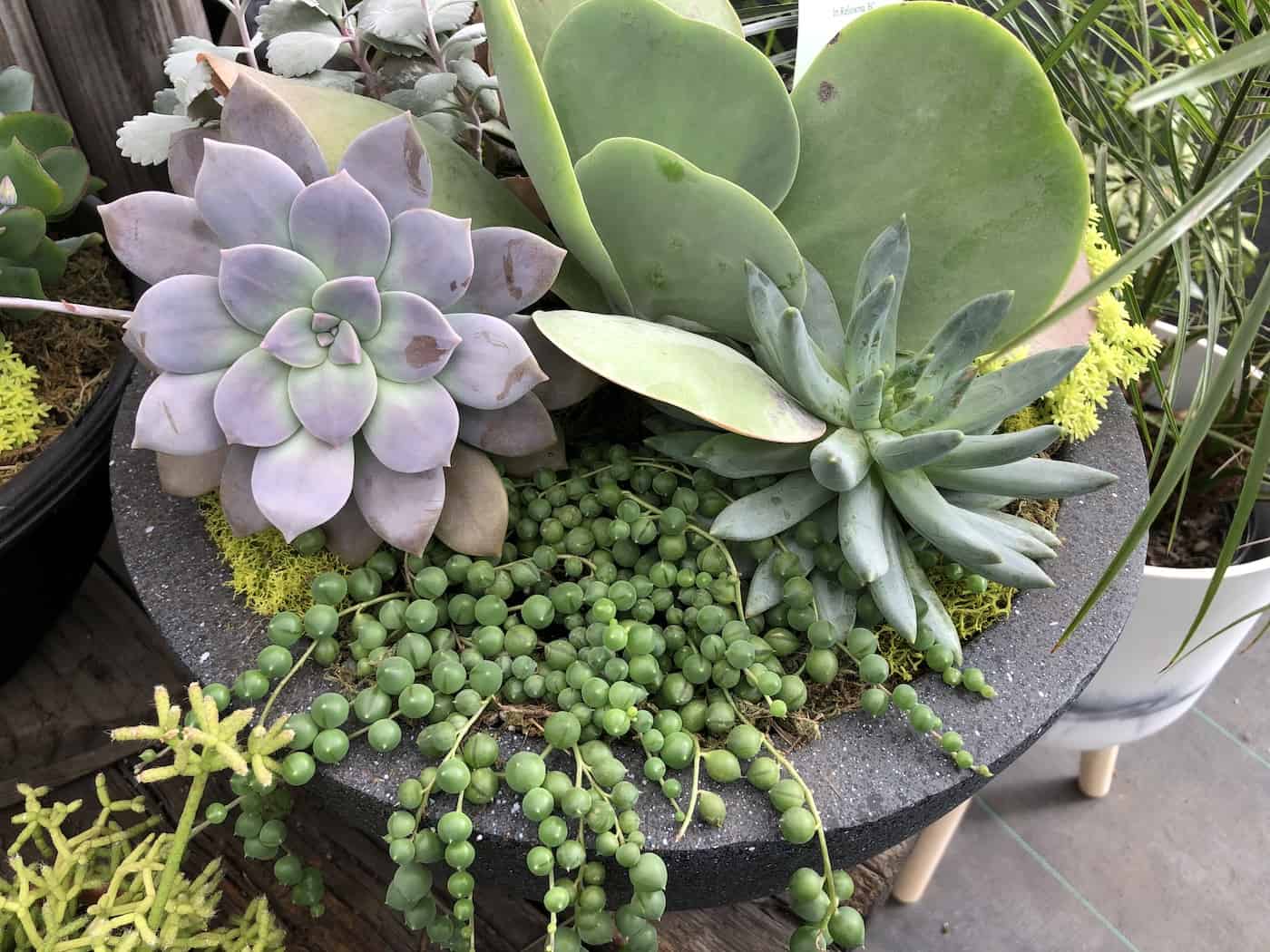
Planting succulents in a bowl (even a glass bowl)
Planting a succulent in a bowl is slightly more tricky than planting it in a proper plant pot. Most plant pots have drainage holes, which allow excess water to drain out of the bottom. Most bowls don’t have drainage holes to let excess water out. While some specially-made plant bowls do allow for drainage, most are just solid-bottom bowls.
BUT – the nice thing about using a bowl instead of a plant pot with a drainage hole is that you don’t have to put a dish under the bowl to collect excess water. Bowls are often much prettier to use indoors. There are also tons of pretty glass bowls and ceramic candy dishes at the thrift store or even in the back of your kitchen cabinet. Let’s put them to use!
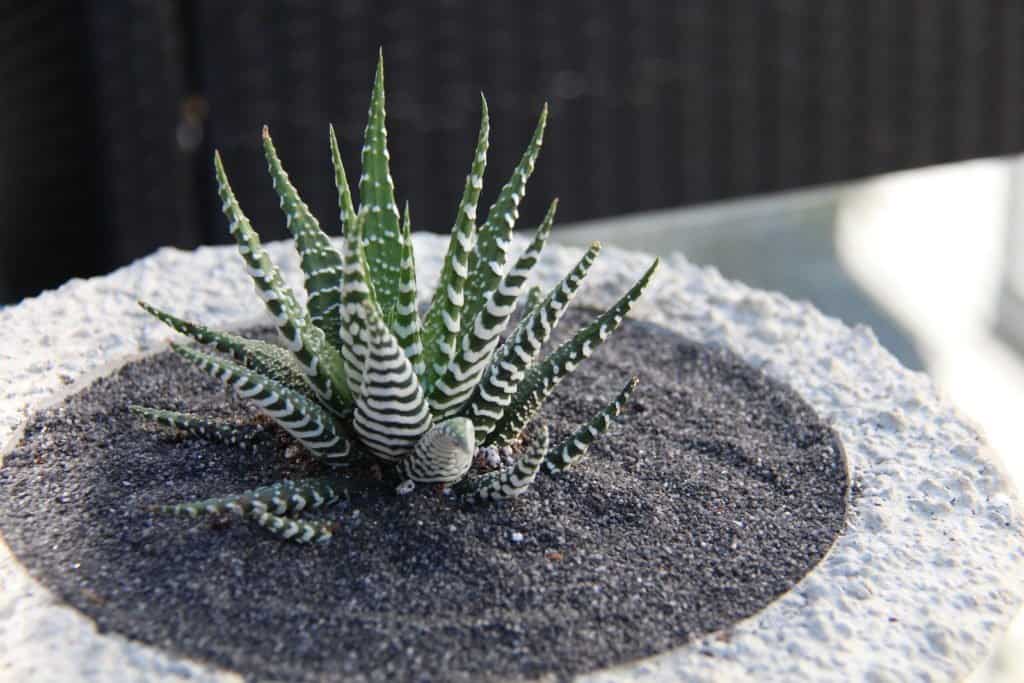
How to care for a succulent bowl garden
Normally, I would discourage against planting anything in a container without drainage. It’s usually easier to drill a hole in a container than it is to deal with the consequences of not having proper drainage. Succulents, however, have such low water requirements that you can get away with using a bowl IF you use high-quality potting soil and don’t over-water the plants. The lack of a drainage hole also prevents water stains on your table!
Some bowls without drainage holes, such as the concrete bowl pictured above, do allow a tiny bit of drainage because the bowl material is slightly porous. Concrete, unglazed pottery bowls, and terra cotta will allow a touch of water through the walls. These are good choices for indoor succulent gardens.
Glass and plastic bowls are non-porous and will not allow water (or air) to pass through the walls. The most important part about how to plant succulents in glass containers is not to overwater your succulent glass bowl! Succulent bowl health issues are generally related to overwatering rather than underwatering. Succulents have evolved to live with only tiny amounts of water!
This article includes lots of tips for growing succulents in glass, but for even more information, the book Miniature Terrariums: Tiny Glass Container Gardens is an excellent resource. It is certainly worth the read.
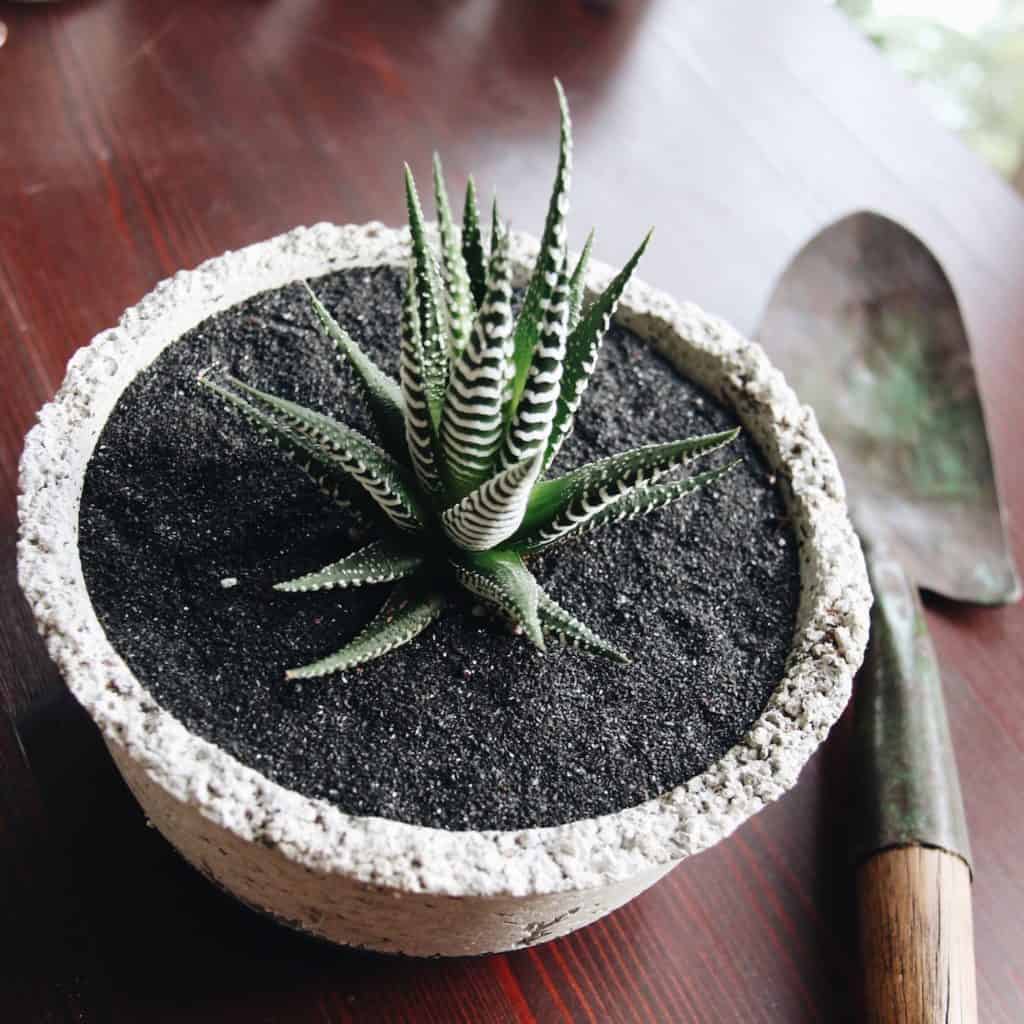
Watering succulent glass bowl gardens
Overwatering really is the easiest way to kill your succulent terrarium. Remember that you don’t have to saturate all the soil in the bowl when you water the plant. Succulents are very efficient at finding and using small amounts of water available in the soil around their roots. If your succulent is looking unhappy and you’ve watered it in the last few weeks, it’s likely feeling drowned.
So how do you avoid overwatering your succulent glass bowl? As soon as you’ve planted it, take note of how heavy the bowl is. Pick the planted succulent glass bowl up a few days later and notice if it’s any lighter. It may dry out faster in dry weather than during periods of high humidity.
Wait until the planted glass succulent bowl feels significantly lighter than when it was first planted. Then give it a gentle watering. You do not need to saturate all the soil! Just saturate the soil around the base of the succulent. The succulent will find the water. The roots of succulent plants need access to air just as much as they need water.
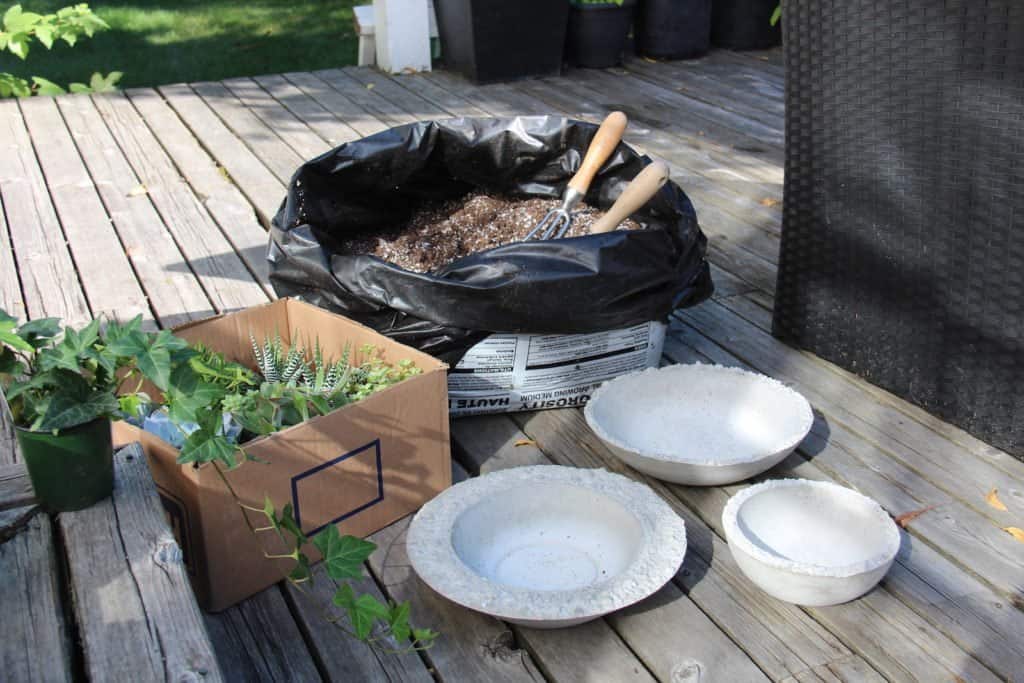
Supplies: Planting a DIY succulent bowl
Here’s what you’ll need to plant succulents in a bowl:
- Succulent(s)
- When planting only a few succulents, use an uneven number of plants.
- Try to find succulents with different heights and textures to add interest to the bowl.
- Succulents collections are available online (or get them from a friend with an overly zealous plant).
- Bowl
- Unglazed porous material like a concrete bowl or terra cotta is easiest as the bowl will absorb a small amount of water.
- Planting succulents in a glass bowl is totally possible…just be extra careful about not overwatering.
- Potting Soil for Succulents
- Organic Succulent Soil Mix
- Homemade soil mix of 50% regular potting soil, 25% sand, and 25% perlite.
- Garden Trowel
- Decorative Sand
- White sand can look lovely but will have to be refreshed now and then as it washes into the soil.
- Black sand is lower maintenance as it camouflages any soil that’s showing and rarely requires replacement.
- Small Spoon
- Filtered Water
- Craft Paintbrush (optional)
If you want to get fancy or are already an avid succulent terrarium gardener, you’re welcome to add volcanic pebbles (the kind with air holes in them) or perlite to the bottom of the bowl to create a bit of drainage space. Just because you add pebbles on the bottom though, doesn’t mean you can consider over-watering your succulent. Pebbles won’t save you from drowning your desert-loving plant. Again, if you’re feeling fancy, you can also add activated charcoal to add a water filtration feature to your bowl.
I’ve planted succulent bowls both with and without pebbles and charcoal on the bottom, and I haven’t seen a huge difference. If adding them makes you feel more comfortable, then, by all means, add them. You only need a small layer of charcoal in your succulent bowl.
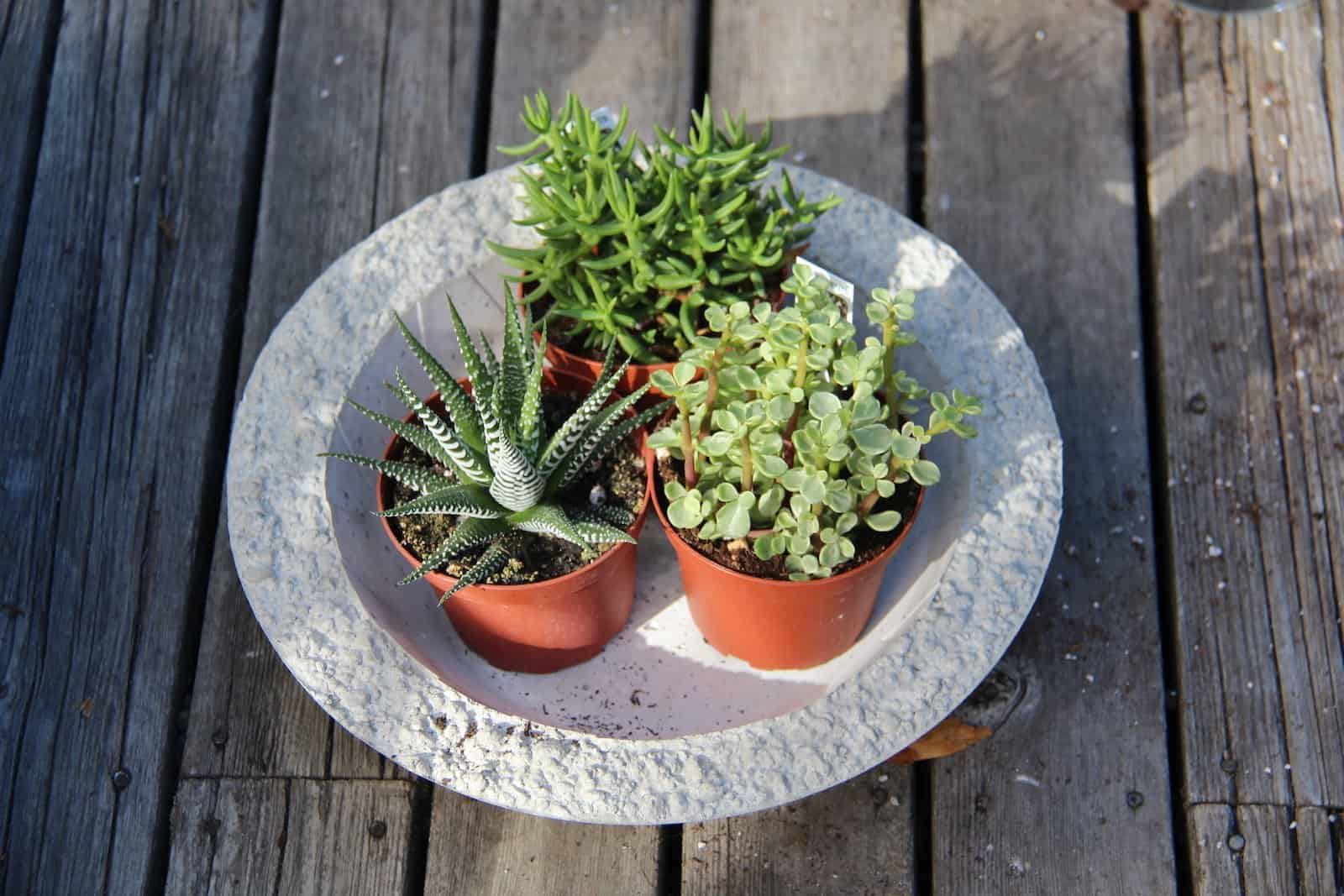
Steps to make a succulent terrarium
- Take each succulent out of the nursery plant pot. If the succulent’s roots are visible on the outside of the soil, gently massage them so they become loose and more natural-looking. Remove any spent leaves from the plant.
- Place the succulents in the bowl.
- Make note of each succulent’s soil level and compare it to the height of the succulent bowl’s edge. Ideally, the top of the soil should be just over 1 cm (1/2″) below the edge of the bowl. The purpose of this sunken soil level is to allow for the later placement of decorative sand and to ensure there is still a bit of room left for watering the succulent.
- If the soil is higher than 1 cm, loosen and remove some soil from the bottom of the plant until the desired height is reached. Spread the longer roots out along the bottom of the bowl.
- Use the potting soil to fill in the remaining volume of the bowl area. Keep the soil level just over 1 cm below the edge of the bowl.
- Use the small paintbrush to brush any potting soil on the ledge of the bowl back into the middle. Brush the potting soil down the inner sides of the bowl so that there is no stray soil. If there is soil on the leaves, use the brush to clean off the succulents.
- Gently pat down the potting soil to create a flat surface upon which to place the sand. Getting the edges level is important for glass succulent bowls so they look uniform when viewed from the side.
- Carefully pour out the decorative sand onto the top of the potting soil.
- Use the spoon to work the sand up against the succulents.
- Use the paintbrush to brush any stray sand off of the succulents or off the ledge of the bowl.
- Carefully drip filtered water down any leaves that are dusty as a result of planting the succulents. This will wash the leaves and make the bowl look finished. Only apply a few drops to each plant (don’t overwater!).
As an optional bonus, decorate the sand surface with a few rocks, small pieces of driftwood, or even figurines.
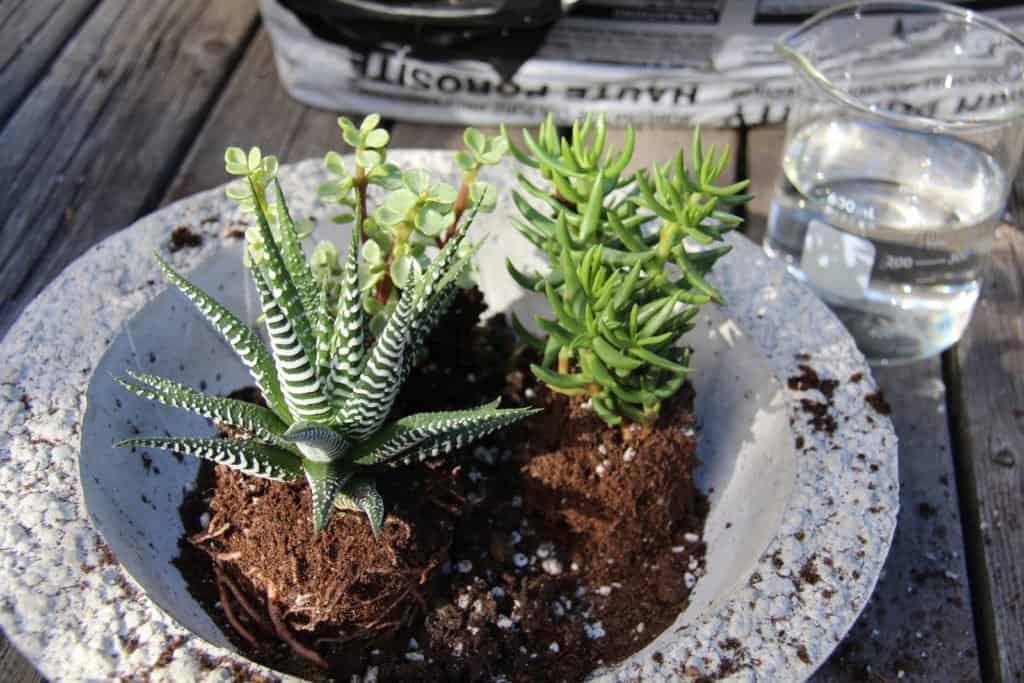
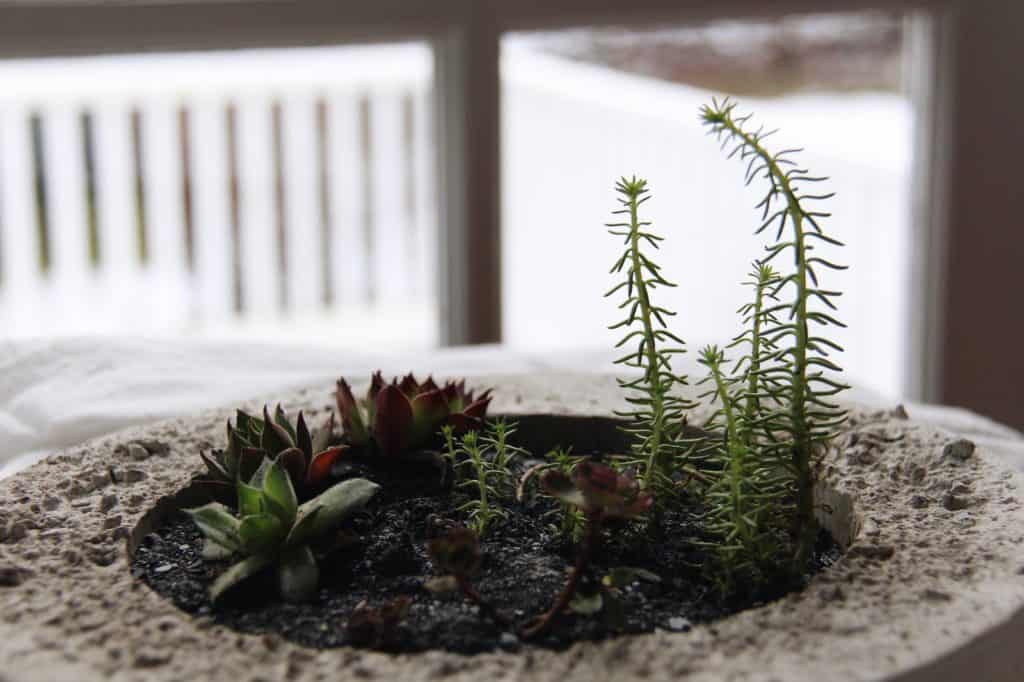
Caring for a succulent bowl
As mentioned above, succulents thrive on neglect. Honestly. If you “love” them to much (AKA overwater), succulents can die surprisingly quickly. Succulents appreciate their soil drying out completely between waterings.
Also, remember that you don’t have to saturate all the soil in the bowl to water the plant. Simply water sparingly around the plant itself and allow the water to diffuse into the surrounding dry soil.
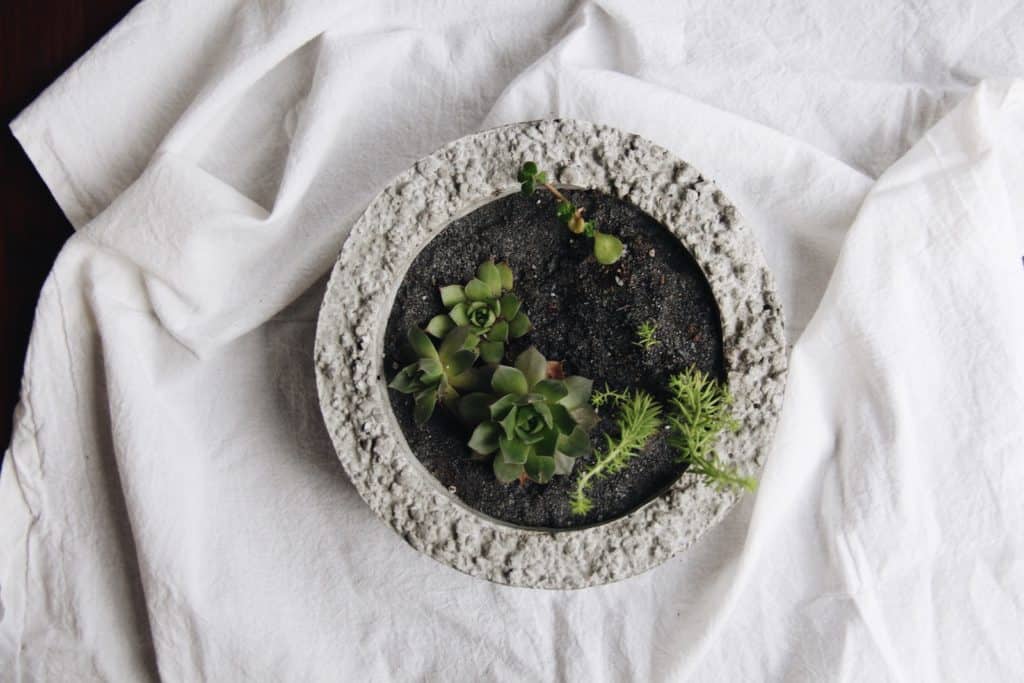
On the other end of the scale, if you forget about your DIY succulent terrarium and the leaves start to dry and shrivel, the plants can usually be brought back from the edge with some careful light watering. If you forget to water for several months, most succulents will probably live (I have done this on numerous occasions…I’m not proud).
Different water requirements for different types of succulents
Make note of any watering instructions that come with the plant when you buy it. Some succulents can handle weekly waterings, while others prefer to receive water monthly. In general, succulents with fleshier, thicker leaves can hold more water (and last longer between waterings). If you know the outdoor climate that the plant will survive in, that can also give you some clues about how tough it will be in different growing environments.
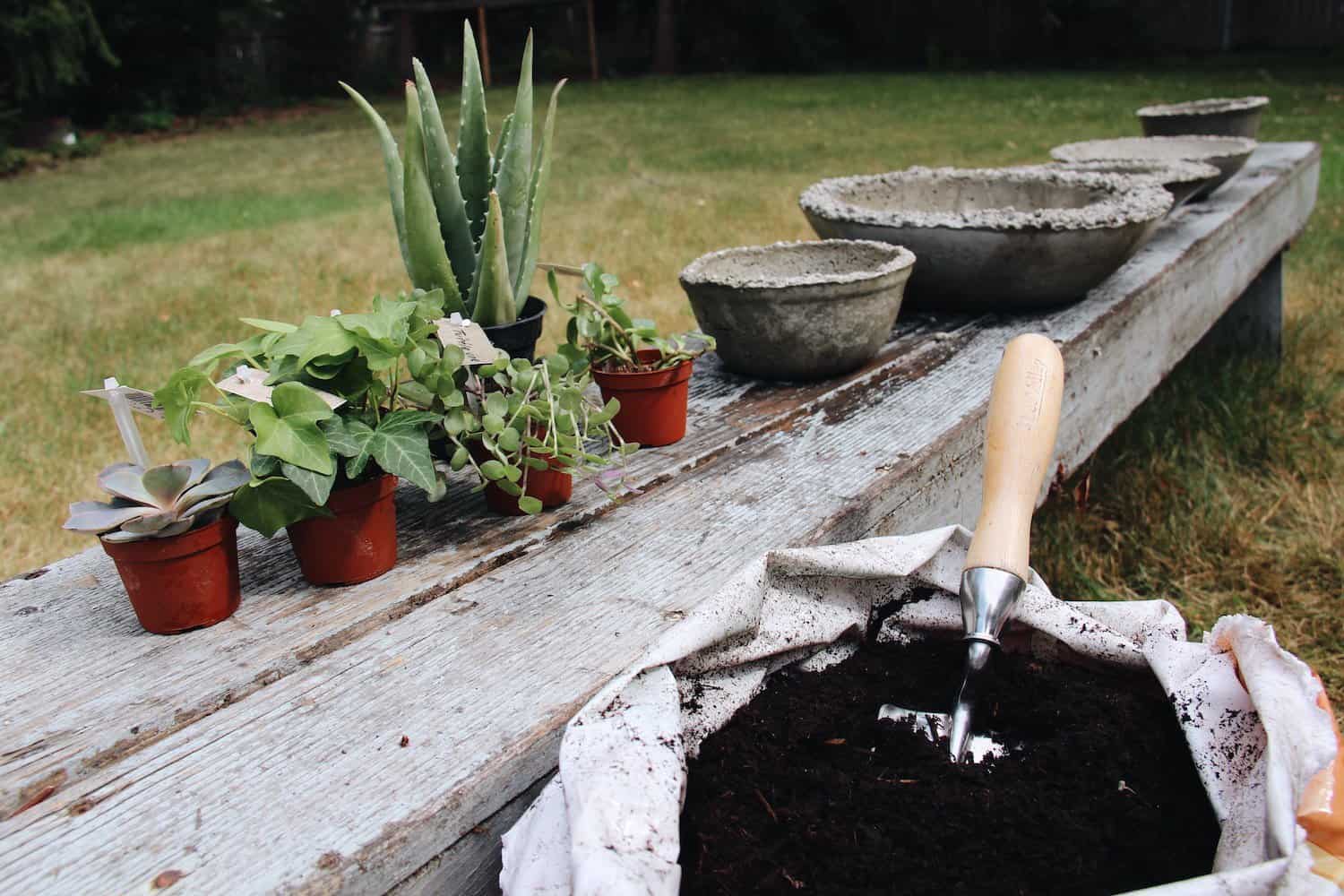
Sun-loving succulent garden bowls
Like many of us, succulents love the sun…but not TOO much sun. Their leaves can actually become scorched if they’re out on a hot concrete patio in a particularly sunny area. This is particularly true if the plant has become accustomed to living indoors.
Place your succulent bowl somewhere it will get 6-8 hours of sun each day, preferably in the morning. Soft morning light is preferable to harsh afternoon light, as it’s much less likely to scorch the leaves. You can also use a mini LED plant light if you’re worried your succulent bowl isn’t getting enough light.
Some hardy succulents will tolerate limited below-freezing weather, but most of the varieties available year-round at the hardware store will not. The Haworthia/Zebra plant below is definitely not going to survive our freezing Canadian winters! If you’re not sure that the succulents you’ve purchased for your succulent terrarium are hardy, it’s best to do some research on the type or take them indoors during the winter.
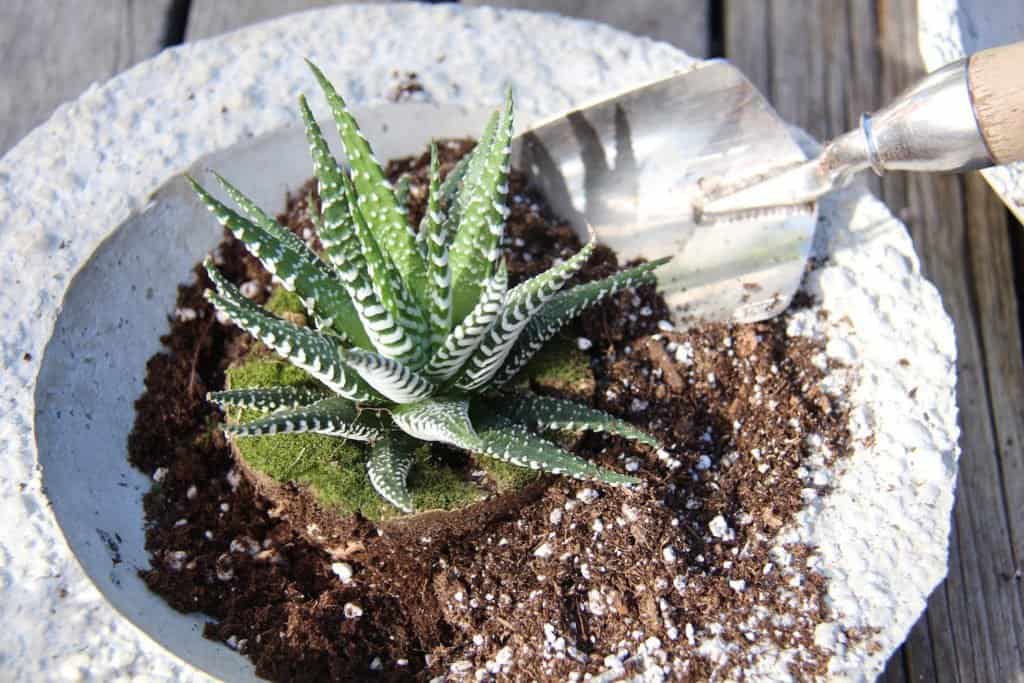
Further care and feeding for your succulents
There are a few other factors of the growing environment considered for your succulent bowl. Since your succulent is in potting mix, not natural soil, it will need some plant food now and then. Succulents need feeding most often when they’re actively growing. I feed my succulents once every month or two in the summertime when the sun is out encouraging growth.
To feed my succulents, I soak a bit of homemade organic compost or store-bought worm castings in filtered water for 2 days, stirring regularly. Then I use this “plant food tea” to water the succulents the next time they’re due for watering. This method is safe for use in organic gardens. You can also buy specialized organic cactus+succulent plant food. Read more about organic fertilizers.
One last DIY succulent bowl tip
One more note about mimicking the natural environment is not to put your succulent in a closed terrarium or under a glass container. They like air circulation. Imagine the cool evening breeze in the desert blowing over wild succulents…don’t trap them in an enclosed environment. An open succulent glass bowl will be much better than a sealed glass terrarium.

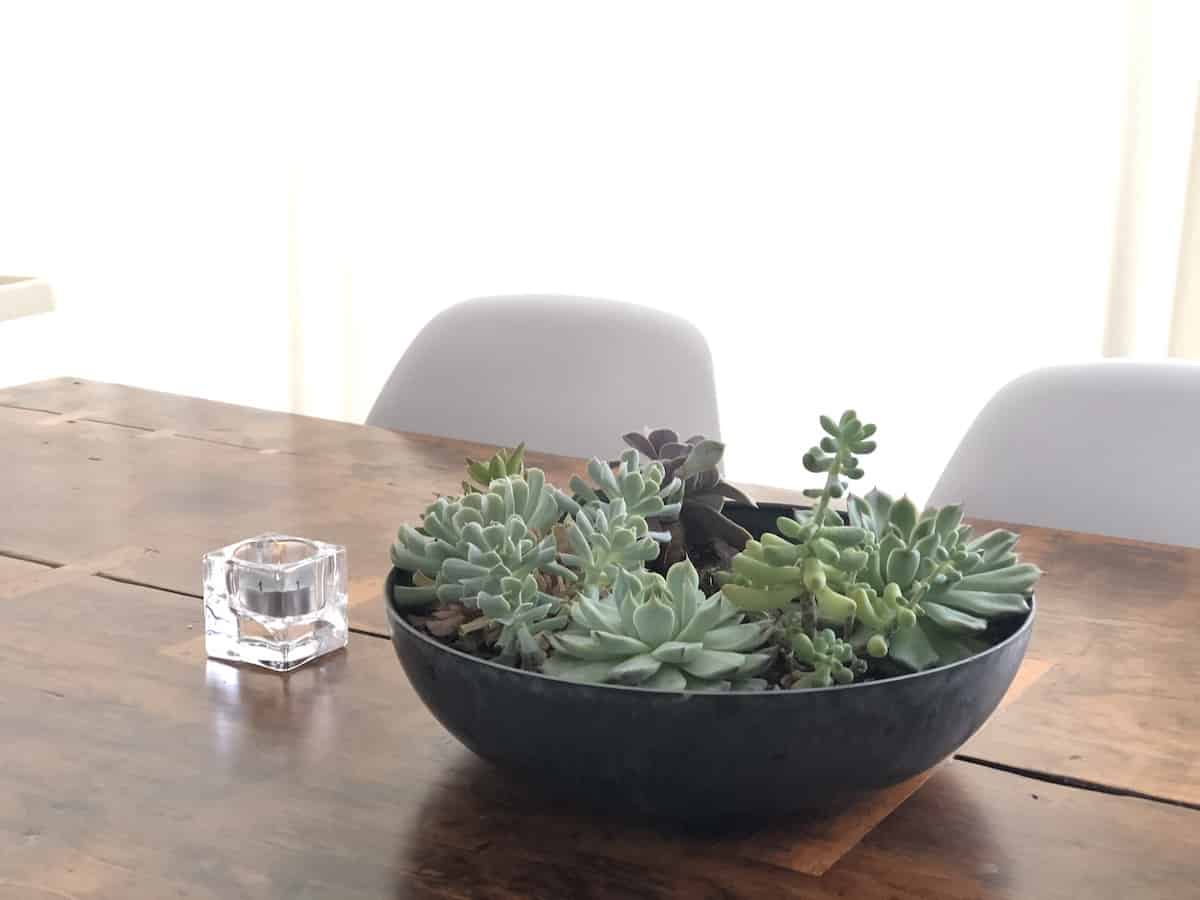
References
- West Virginia University: Succulents 101
- University of Florida: Succulents
- Iowa State University: Growing Succulents Indoors
- University of Illinois: Growing Succulents: Beyond the Basics


